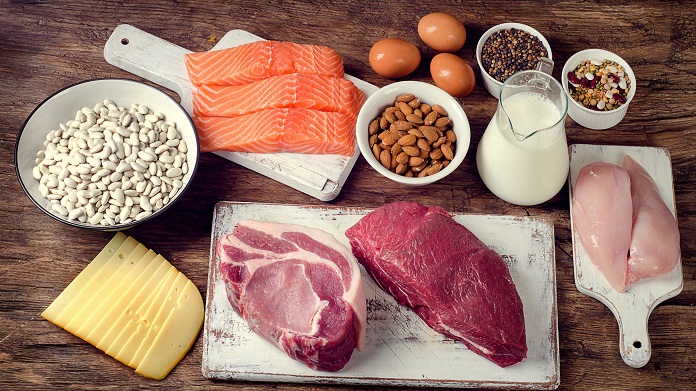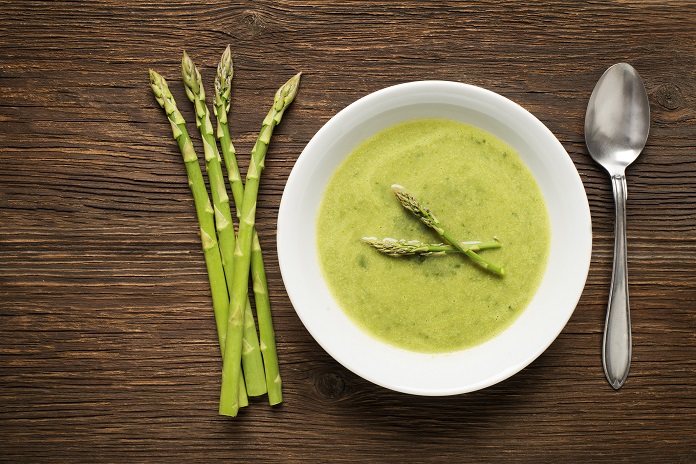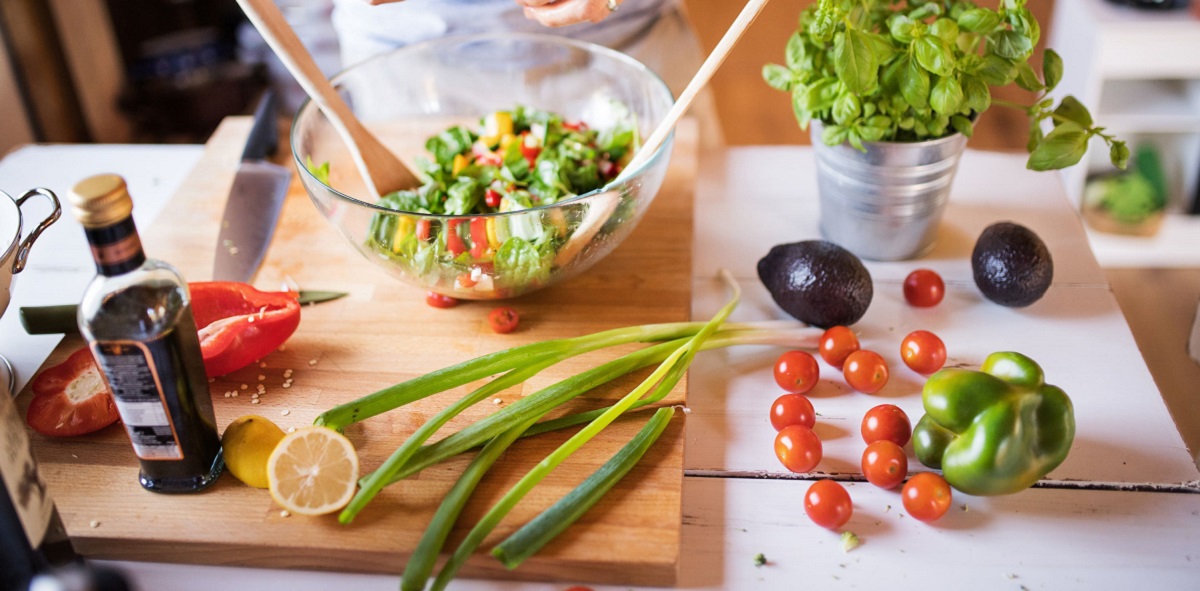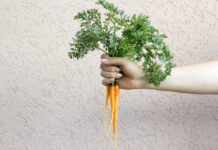Are you trying to eat healthier and get fitter but still struggling with portion control? Piling too much onto your plate is likely to encourage you to eat more. We spoke to experts to find out how we can learn better portion control and seven practical tips you can start using.
Researchers from the University of Vermont found that learning to associate fullness with getting more food can trigger further feelings of hunger, even when we couldn’t possibly need to eat more. It’s psychological conditioning. Dr Mark Bouton and Dr Scott Schepers conditioned 32 female rodents to know they’d get a tasty treat if they pushed a lever while they were full, whereas they’d get nothing if they pushed it while hungry. And while the study was carried out on rats, it’s a bit like how we’re taught as kids that if we eat everything on our plate, we’ll be rewarded with pudding.
The British Nutrition Foundation (BNF) has a guide called Find Your Balance which will quickly give you advice on what a portion size should look like for you and how to learn portion control. They want you to know that what you eat is important, but so is how you eat it.
How to learn portion control
Here’s everything you need to know about portion sizes…
Fruit and veg
View this post on InstagramThe #fruitandveg delivery day is my favorite 🍏🍋🥑🍅🥒🥕🍌 #nofilterneeded #colorsofnature
Find Your Balance has been created with the Government’s Eatwell guide in mind, which suggests how many portions of each food group you should be having every day.
For fruit and veg, you should be aiming for 5 or more. There’s really no need to worry too much about size, because the BNF says “you can have bigger portions of fruit and vegetables. They’re mostly low in calories, provided there’s no fat or sugar added”.
Yes, this means juice counts – but only one portion a day, and just a small glass of 150ml.
Starchy carbohydrates

It’s recommended to eat around 3 to 4 portions of starchy carbs a day. Let’s face it – we generally don’t weigh out our food, so it’s hard to actually know how much you’re eating.
This is why the BNF’s visual system helps as you can use your hands to get a good idea of how much you should be eating. For lighter meals and breakfasts (under 200kcal), 1 portion of breakfast cereals or muesli tends to be about 3 handfuls, and porridge 1 and a half. Things like bread are already ready portioned, and 2 slices of medium-sized wholegrain will do the trick.
Here’s a handy tip to learn portion control: For main meals (over 200kcal), it recommends around 2 handfuls of things like dried pasta, rice and cous cous. For cooked versions, it’s the amount of 2 hands cupped together.
Tip for spaghetti – use your finger and thumb to measure a bunch the size of a £1 coin. Considering how oddly difficult it is to measure any type of pasta and not get it hugely wrong, this is pretty handy.
And as a general tip to be more healthy – go for wholemeal versions where possible, and keep the skins on potatoes for that extra boost of fibre.
Protein

Even though protein might be Instagram’s favourite food group, the NHS still recommends just 2 to 3 portions a day.
Chicken breasts should measure half the size of your hand. This means different-sized people should eat different-sized portions. Fish fillets can be between half the size of a hand and a whole hand. If you want vegetarian versions, go for around 6 tablespoons of lentils, beans and pulses, or 2 eggs.
For a protein-rich snack, eat the amount of nuts and seeds that will fit into your palm.
Dairy
The recommendation for dairy is also 2 to 3 portions a day. We don’t advise measuring things like milk or yogurt with your hands – that would definitely end up being quite messy. It’s worth looking up the BNF’s individual recommendations. For example, half a glass of milk on cereal, a whole glass if you’re drinking it, and 4 tablespoons of plain, low-fat yogurt are ideal.
It’s easier to measure cheese, but a whole lot less fun when you see what the recommendations are. For hard styles (like Cheddar). Anything like Stilton or Brie, you should only be eating around the size of 2 thumbs. For soft cheese, it’s 3 teaspoons.
7 practical portion control tips to learn
1. Be mindful of why you’re eating
Lots of us eat for comfort, or to reward or soothe ourselves – and it can lead to compulsive cycles, but taking time to acknowledge what’s going on emotionally is a helpful step.
“Before you eat, notice if you are actually hungry or not. Are you eating for a reason other than hunger? If so, it could mean you will never reach a point of satisfaction. Think about if this will truly help with whatever may be behind your want to eat,” says Lisa Beasley, anti-diet crusader and founder of My Body Positive.
2. Check in as you chew
Tend to go into a trance when you eat? If the concept of leaving anything on your plate is just downright alien to you – you’re not alone. But Lisa suggests trying to learn to “listen to your body while you’re eating”.
“Take a moment to stop and notice the sensations. If you reach that ‘Christmas day’ feeling of feeling stuffed, [ask yourself], ‘Is this actually a pleasant sensation?’ Remember, you are eating with the intention of feeling good when you’re finished.”
3. Snack happy
Snacking is an important aspect of learning portion control. Forget what your mean Aunt Moody told you about the sins of eating between meals. Snacks (such as nuts, fruit, oat cakes, rather than chocolate digestives, sadly) are actually really good if you want to avoid getting too ravenous at mealtimes.
“Snack on an egg,” suggests Shona Wilkinson, nutritionist at Superfooduk.com. “These make a great snack as the combination of protein and good fat help you feel fuller for longer. Try boiling them in advance, and keeping them in the fridge as an easy snack to enjoy on the go. They will last up to a week.”
4. Stay well hydrated

“Sometimes thirst can actually be mistaken for hunger,” says Shona. “We feel like we’re craving something and interpret this as hunger, when actually all we need is a glass of water!”
So make sure you’re drinking enough H20 – and that means sipping throughout the day, not just downing a pint when you feel a dehydration headache coming on. “Water’s also needed in order for our cells to make use of the nutrients in the food that we eat; and lack of nutrient availability causes our body to crave more food,” Shona adds.
5. Bulk up
This might sound like a no-brainer – but make sure your meals are actually satisfying.
Remember, carbs are a necessity, not the enemy – so don’t be fooled into thinking you need to ditch potatoes, pasta and rice. Dense, high-fibre foods like root vegetables, beans and pulses are a great way to bulk out meals.
6. Breakfast like a boss
Get breakfast wrong and you might be paying the price in out-of-whack energy levels and cravings all day long.
“Oats are brilliant for keeping hunger pangs at bay. They are nutritious and contain a good amount of fibre,” says Shona. “They have been shown to help balance blood sugar levels, thus keeping sugar cravings and hunger pains at bay.”
7. Enjoy a soup-er starter

“If you have soup before a meal, you will end up eating less calories during the meal. The soup gives you the sensation of being fuller because it remains in the stomach for longer and makes you feel more satisfied,” says nutritionist Dr Marilyn Glenville, author of Natural Alternatives to Sugar (Amazon).
“In addition, the soup remaining in the stomach stops the cells in the stomach producing your hunger hormone ghrelin and turns off your appetite.”
You may also be interested in…
This article may include affiliate links to products and services where we may receive a small fee to support the running of this site if you make a purchase or is a sponsored article from one of our select editorial partners providing valuable advice and information to our readers.








































































